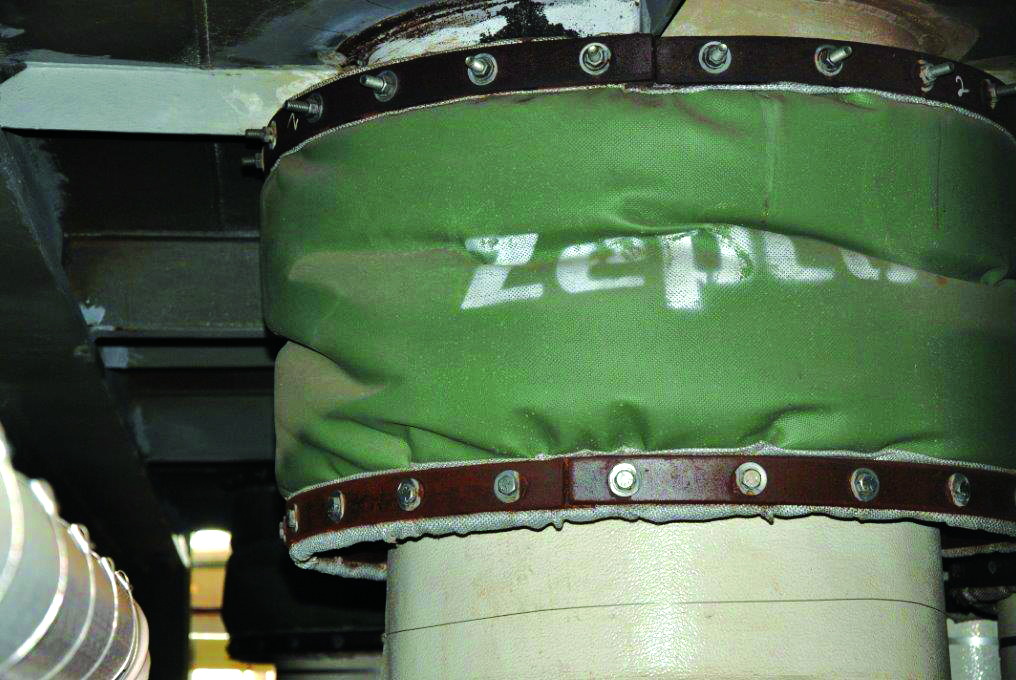In high-heat, high-vibration industrial environments, the smallest failure in a fabric expansion joint can ripple into massive operational losses. Downtime, leaks, and system instability are inconvenient and expensive. That’s why fabric expansion joint same day replacement services are no longer optional—they’re mission-critical. At Zepco LLC, we provide replacements. We deliver fast, precision-engineered, and durable solutions you can trust—within hour.
Why Fabric Expansion Joints Matter More Than You Think
Fabric expansion joints are the unsung heroes of industrial systems. They absorb thermal movement, reduce mechanical stress, and maintain structural integrity across high-temperature ducting, exhaust systems, and complex piping networks. Whether you’re managing an energy plant, refinery, paper mill, or cement kiln, your system relies on these flexible yet resilient components to function safely and efficiently.
But like any wear component, fabric expansion joints degrade over time. Ignoring worn joints leads to efficiency loss, emissions leaks, system failure—or worse, hazardous work conditions. When a joint breaks down, waiting days for a replacement is not an option. That’s where Zepco’s fabric expansion joint same day replacement service proves invaluable.
When Every Hour Counts: The Value of Speed in Joint Replacement
Every hour your plant is offline costs money, productivity, and trust. Emergencies don’t wait for standard lead times. You need a 24 hour fabric expansion joint solution that works as fast as your demands.
Zepco understands this urgency. Our fabric expansion joint same day replacement capability is purpose-built for emergency industrial joint replacement scenarios. Whether it’s a cracked joint on your high-temperature ducting or a failed connector in your process piping, we deliver the precise part you need—today.
Zepco’s Same-Day Replacement Advantage
Zepco is fast and engineered for it.
- Quick Turnaround: We keep a wide inventory of high-grade materials like PTFE, silicone, fiberglass, and multi-layered insulation ready to fabricate.
- Custom Fit: Each replacement is precision-fabricated to your specs, drawing, or field measurements—no shortcuts.
- Expert Support: Our engineers and technicians speak your industry’s language, offering real-time solutions and trusted advice.
- Nationwide Reach: Whether you’re across the state or across the country, we offer fast shipping and local service options to meet your timeline.
From one-off expansion joint replacement requests to system-wide emergencies, Zepco scales to your needs.
Engineered to Perform: Durable Materials That Last
Zepco’s fabric expansion joint replacement solutions are designed to handle the harshest conditions. We use materials tailored to your environment—resistant to high temps, aggressive chemicals, constant vibration, and variable pressures. Every joint meets or exceeds standards like ASME, API, and ASTM.
You’re getting a quick fix and a custom, high-performance solution that endures.
Trusted Across Industries
From utilities to manufacturing, Zepco’s clients trust our fabric expansion joint same day replacement services in critical applications:
- Power Generation: Boilers, turbines, and flue gas systems
- Refineries & Petrochemicals: Corrosive gas and fluid transfer
- Pulp & Paper: Moisture- and pressure-intensive environments
- Cement & Lime Plants: High dust, heat, and movement
- Steel & Foundries: Shock and vibration-heavy conditions
- HVAC Systems: Large-scale ventilation and exhaust systems
No matter the industry, we deliver precision under pressure.
From Concept to Installation: Custom Fabrication & Engineering
What sets Zepco apart is our in-house engineering excellence. Whether you’re working from legacy specs, incomplete drawings, or need help determining the right joint, our team translates your needs into durable solutions fast.
We provide:
- CAD-assisted designs
- Fast prototyping
- Field measurement integration
- Batch or one-off production
It’s more than replacement—it’s engineered resilience.
Stay Ahead: Preventive Maintenance & Inspections
In addition to same-day service, Zepco offers preventive maintenance programs to help you avoid emergencies altogether. From material evaluations to on-site inspections, we help you extend equipment life and avoid costly shutdowns.
Need guidance on installation? We’ve got that too. Zepco’s technicians advise on best practices and material selection tailored to your systems.
Get Back Online—Fast
If you’re facing an emergency or nearing a critical failure point, don’t wait. Contact Zepco for fabric expansion joint same day replacement and let our team help you get back up and running with precision and confidence.


